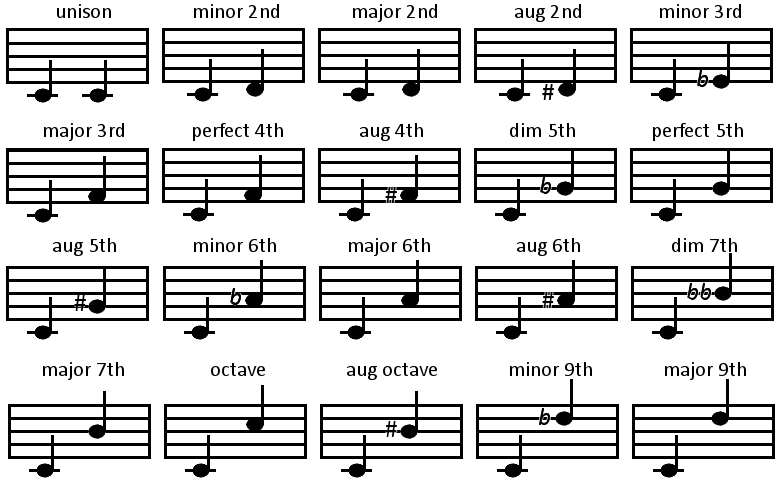Chromatic Intervals Explained
A chromatic interval is described as the number of steps between tones, a step being the distance of pitch from one tone of the scale to the next or the distance between two notes of a scale and on the staff. The interval (third, fifth, octave, etc) is merely a method of separating and identifying that distance of tones or chords between the different keys of the major and minor scaling system. Understanding chord and tone intervals is crucial to maintaining key pitch while composing as well as aids in accurate performance. Review the intervals and assignments illustrated below; they are not intended to illustrate all available intervals but are merely a one octave example to help aid in the recognition of their use.
See also Enharmonic & Diatonic for additional info.
Table of Intervals

Interval Assignment
| unison | (0) | minor sixth | (4) | |
| minor second | (1/2) | major sixth | (4 1/2) | |
| major second | (1) | diminished seventh | (4 1/2) | |
| augmented second | (1 1/2) | augmented sixth | (5) | |
| minor third | (1 1/2) | minor seventh | (5) | |
| major third | (2) | major seventh | (5 1/2) | |
| perfect fourth | (2 1/2) | octave | (6) | |
| augmented fourth | (3) | augmented octave | (6 1/2) | |
| diminshed fifth | (3) | minor ninth | (6 1/2) | |
| perfect fifth | (3 1/2) | major ninth | (7) | |
| augmented fifth | (4) |


